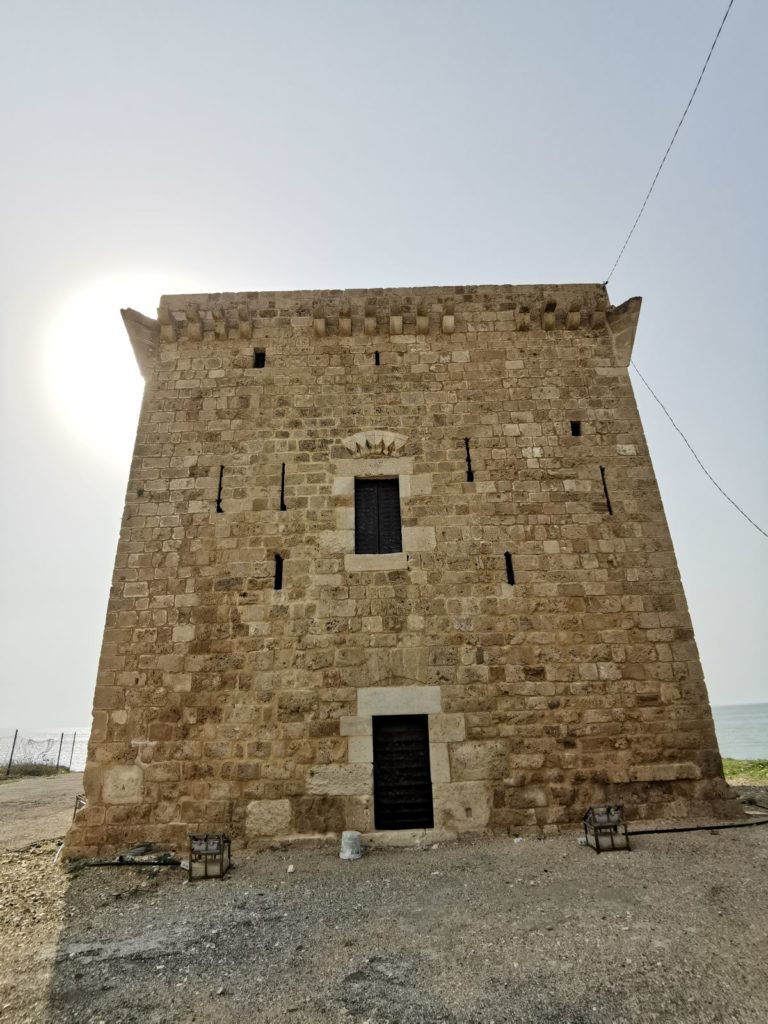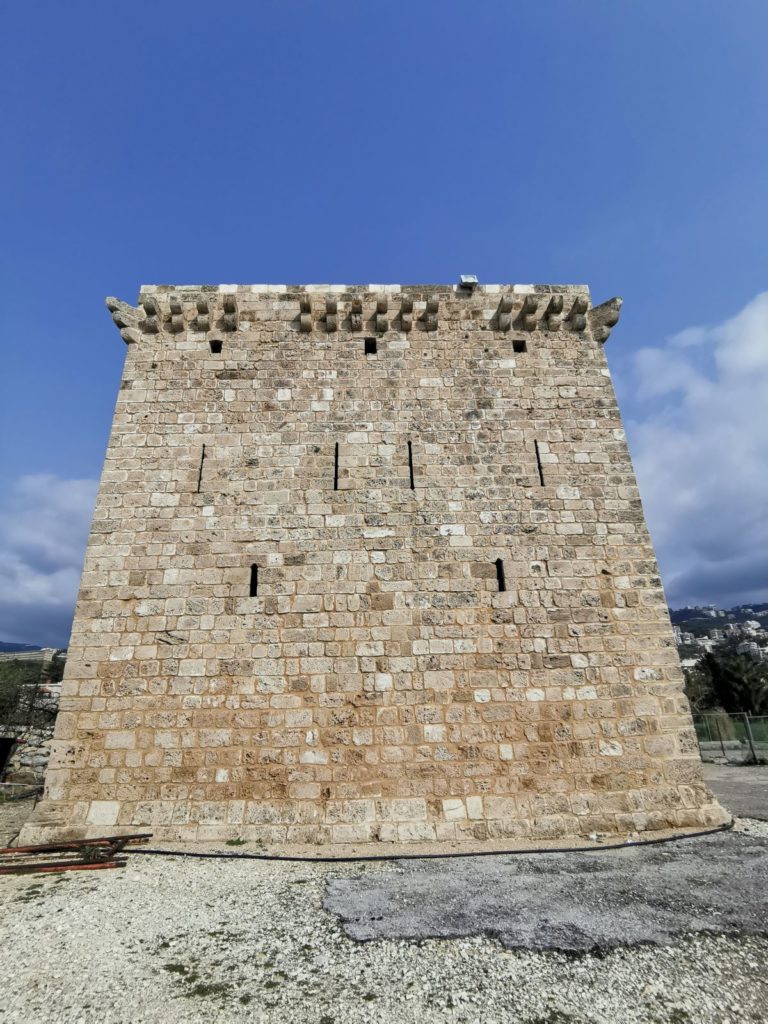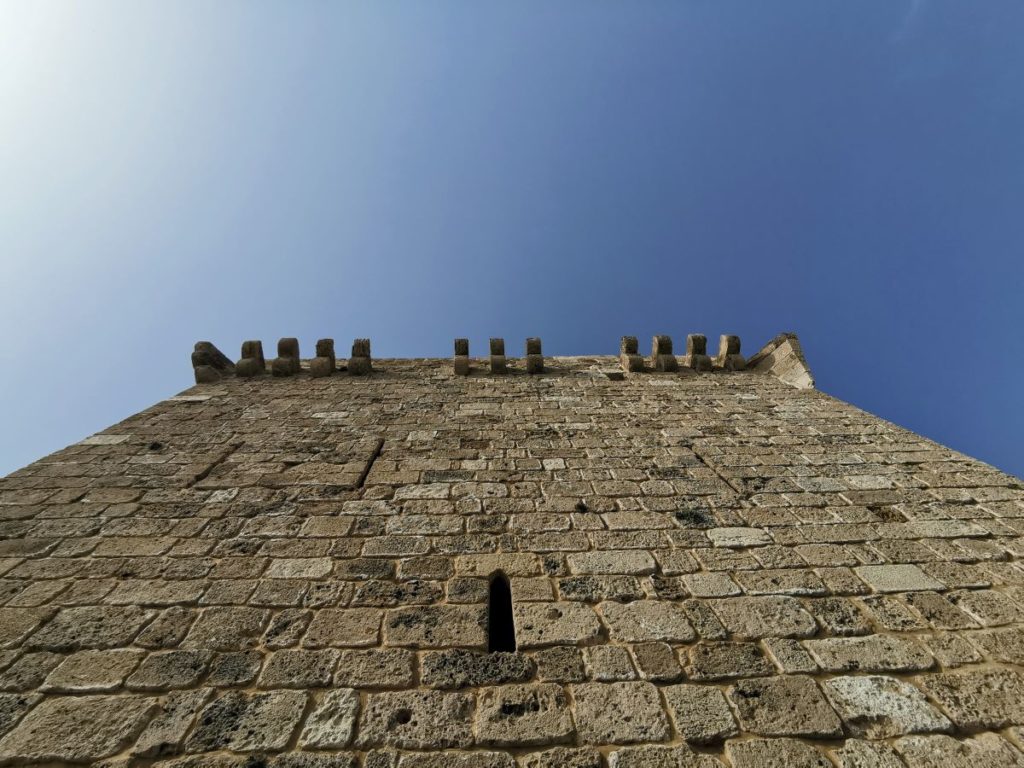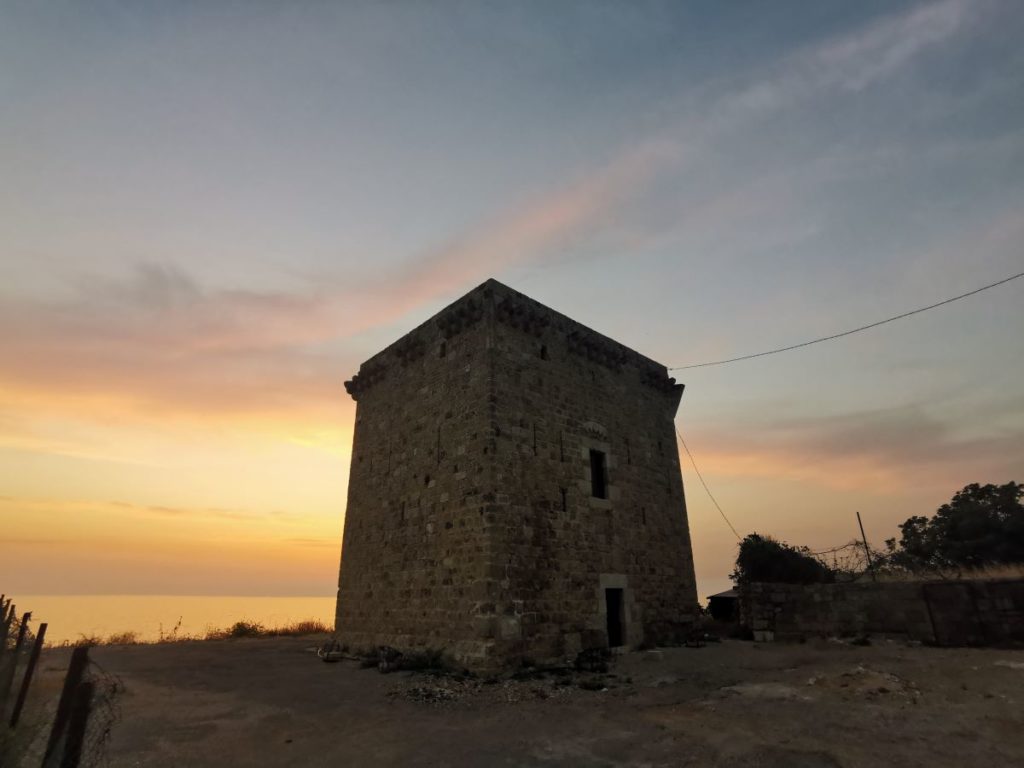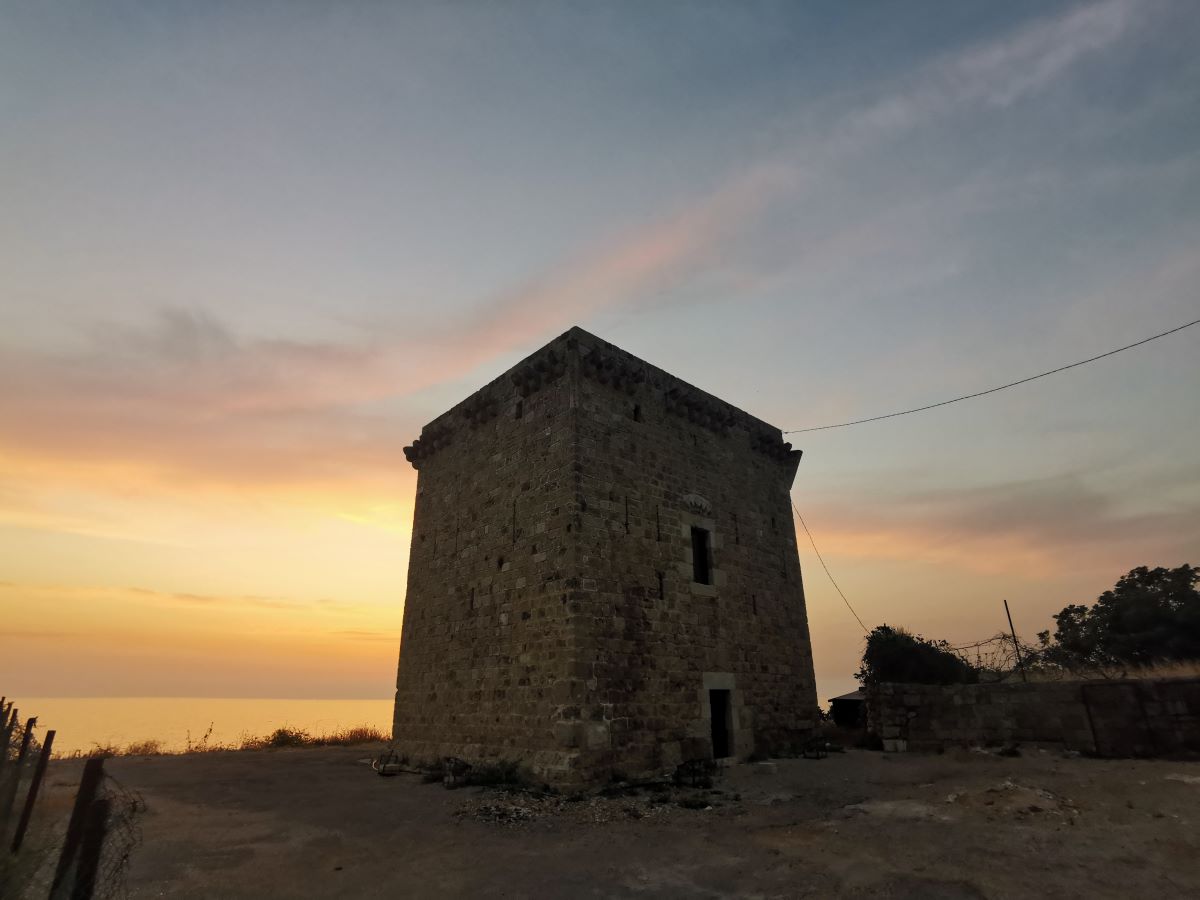El Fidar town houses a defensive tower that dates back to the Medieval era, historically know as Burj Mouheish.
Historical Background
Following the Mamluk victory over the Crusaders and their conquest of the Levant, a series of watch towers were built on the coast in the 13th century.
The towers once formed an unbroken chain of light-of-sight observation posts from Naqura to Naher el-Kebir. Their purpose was to defend the coast by preventing future crusader landings.
In the case of the Fidar tower, there is a probability that an earlier structure was built on site. This theory is based on crusader ornamental elements reused in the construction of the tower under Mamluk rule.
Structure
Measuring about 10 meters high and cubic-shaped, the tower’s facings are smooth, except for a few rubble stones which bear a slight embossment. The eastern facade presents a relief arch whose keystones are carved with rosette chevrons. These keystones are likely re-uses of materials from a Frankish building.
The tower is accessible through a gated 90cm wide door on the eastern facade that leads the visitor to a large hall covered by two groin vaults. The second floor and the roof are nowadays accessible through a staircase, though during medieval times, the defenders would access the upper levels through a ridge connected to the vaults between the upper floors – if the attackers would reach the first floor, they won’t be able to reach the upper levels.
The last level was probably the highest one since a gargoyle still visible on the northern front made it possible to evacuate the rainwater.
The tower is considered to be one of the best preserved of all towers where one can clearly see the corbels of its machicolated battlements, its walls and arrow slits.
You can check a similar structure located in Ras Nhash Citadel and Tabarja.
The tower is accessible via the road of “Zita Fidar” guest house.
*Scroll down to enjoy the pictures and to locate the siteon the map.
*Subscribe at the bottom of this page to receive weeklyarticles and events.
Karim Sokhn
Tour Operator & Tour Guide
References:
http://www.orient-latin.com/fortresses/burjmouheish
